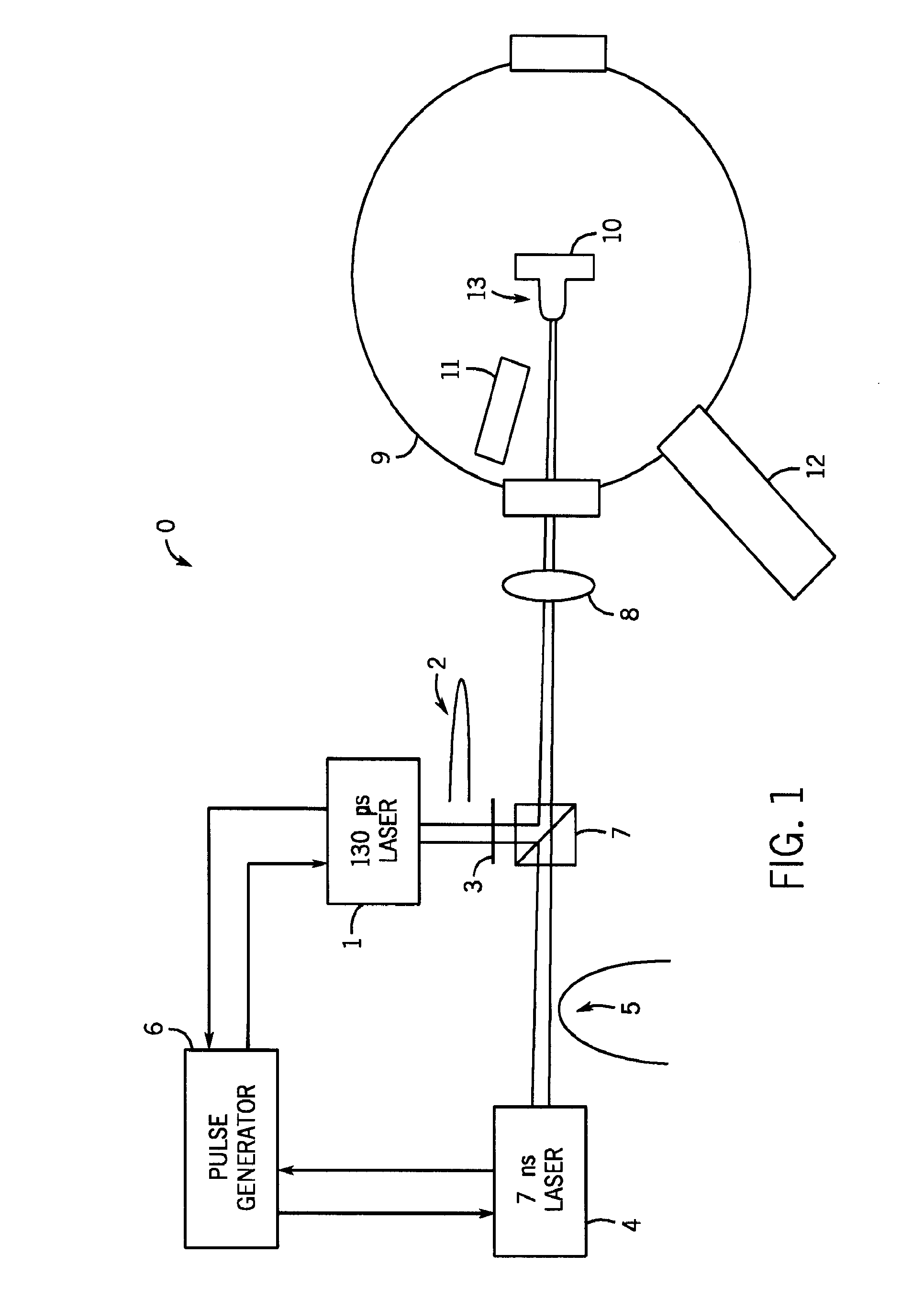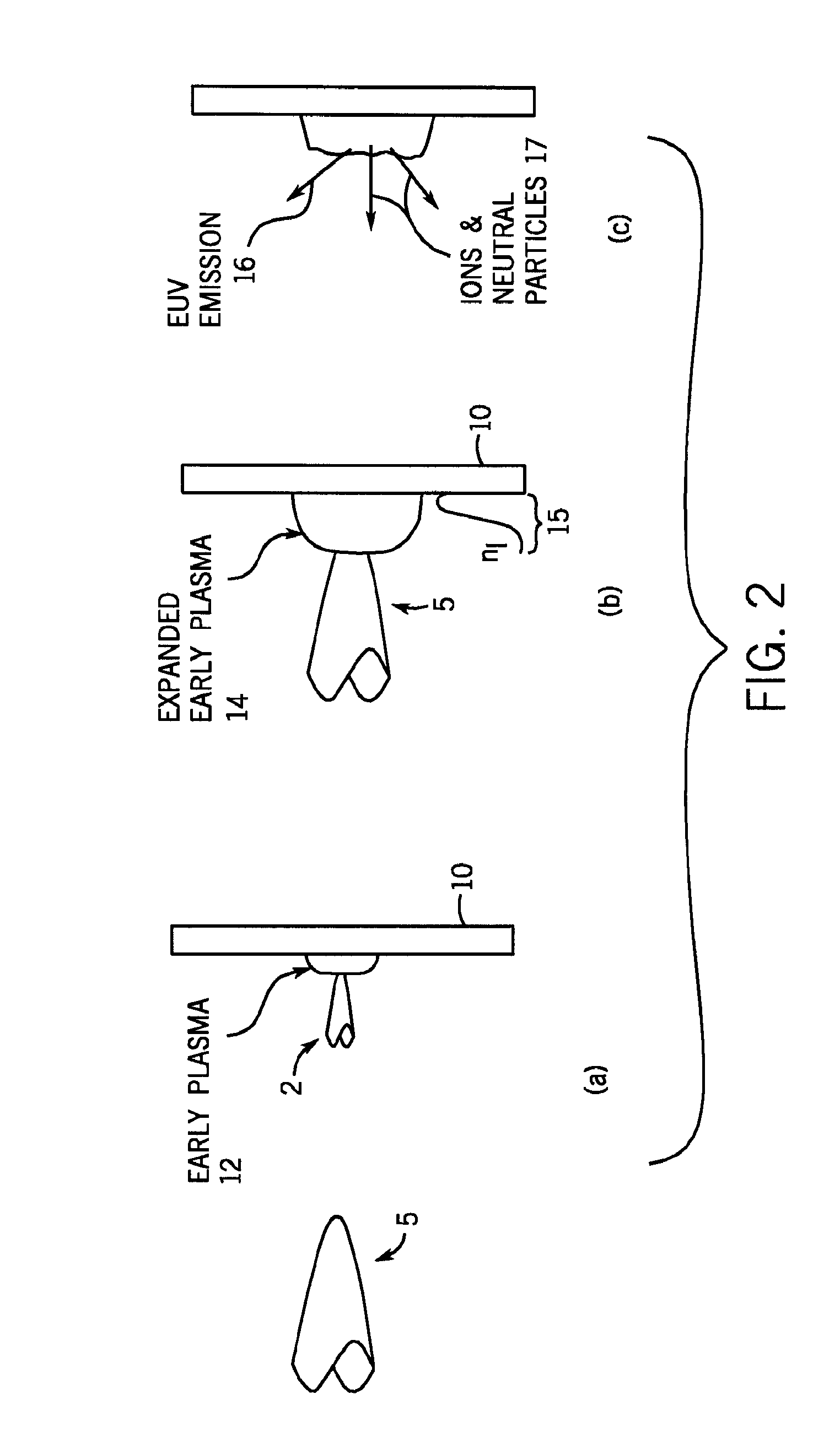Light source employing laser-produced plasma
a laser-produced plasma and light source technology, applied in the field of light sources, can solve the problems of limited effectiveness, damage to the optics of euvl light sources, limited source lifetime, etc., and achieve the effect of reducing the generation of fast ions
- Summary
- Abstract
- Description
- Claims
- Application Information
AI Technical Summary
Benefits of technology
Problems solved by technology
Method used
Image
Examples
Embodiment Construction
[0018]Referring to FIG. 1, a schematic diagram shows an exemplary extreme ultraviolet lithography (EUVL) light source 0 in accordance with at least some embodiments of the present invention, in which the light source involves generation of a laser-produced plasma (LPP) and is driven by dual pulses. More particularly, the light source 0 includes an “early pulse” or pre-pulse laser 1 that is capable of repeatedly emitting a sub-nanosecond, early laser pulse 2. The pre-pulse polarization of the pulse 2 is rotated with a waveplate 3. Additionally, the light source 0 includes a main laser 4 that is capable of repeatedly emitting a longer, main laser pulse 5 having a width of several nanoseconds. In the present embodiment, the lasers 1 and 4 are 1 micron solid-state Nd-YAG lasers, albeit other types of lasers can be used in other embodiments (e.g., other short-pulse laser systems, carbon dioxide lasers, etc.).
[0019]As will be described further below, typically the light source 0 is operat...
PUM
 Login to View More
Login to View More Abstract
Description
Claims
Application Information
 Login to View More
Login to View More - R&D
- Intellectual Property
- Life Sciences
- Materials
- Tech Scout
- Unparalleled Data Quality
- Higher Quality Content
- 60% Fewer Hallucinations
Browse by: Latest US Patents, China's latest patents, Technical Efficacy Thesaurus, Application Domain, Technology Topic, Popular Technical Reports.
© 2025 PatSnap. All rights reserved.Legal|Privacy policy|Modern Slavery Act Transparency Statement|Sitemap|About US| Contact US: help@patsnap.com



